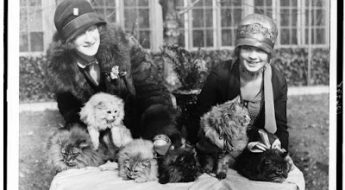BHL through the Eyes of a Student: An Inspiring Window to Natural History
“The cultivation of natural science cannot be efficiently carried on without reference to an extensive library.”
Charles Darwin and fifty-six other signatories made this assertion as part of an appeal for support of natural history research at the British Museum in 1847.[1]
Over one hundred and fifty years later, this still holds true. The domain of systematic biology depends, perhaps more than any other science, upon historic literature. From original species descriptions to distribution data, locality records, behavioral observations and more, natural history literature underpins modern research and is critical to the study of biodiversity.
Thanks to the Biodiversity Heritage Library, researchers around the world have free and open access to these essential publications.

Otto Stenberg, graduate student at the University of Helsinki, taking a detour on the way to the campus. Image Credit: Otto Stenberg
Graduate student Otto Stenberg has experienced the value of historical literature, and the benefits of BHL, first-hand throughout his studies on molecular and evolutionary biology at the University of Helsinki. One of these most memorable instances occurred during an undergraduate research project on pinniped evolution.
“We were gathering information on fossil localities,” explains Stenberg. “I ended up looking for some info on an eared seal fossil from Argentina. The fossil itself was lost in the early 20th century and was thus only briefly mentioned in a couple of other sources. However, on BHL, I managed to find Les mammiferes fossiles de l’Amerique du Sud – the original publication in which a species (Otaria fischeri) had been described based on the fossil. It had the info we were interested in!”

Title page of Les mammiferes fossiles de l’Amerique du Sud. (1880). By Henri Gervais and Florentino Ameghino. Digitized in BHL by Smithsonian Libraries.
Stenberg discovered BHL early in his undergraduate studies, prompted by a discussion about Charles Darwin during an evolutionary biology class lecture.
“I decided to see if I could dig up a scan of the 1st edition of On the Origin of Species on the Internet,” recalls Stenberg. “While a quick search yielded several promising hits, the Biodiversity Heritage Library sounded most interesting – and it turns out it was! I spent several hours just browsing BHL, and didn’t actually end up reading any Darwin that day.”
Stenberg has since completed his undergraduate degree in molecular biosciences and is currently completing his Master’s thesis at the University of Helsinki with a focus on genetics in an evolutionary context. Since 2016, he has been part of a research team at the University’s Jernvall Evo-Devo Lab at the Institute of Biotechnology, where the group is exploring the relationship between dental complexity and diet in carnivoran mammals.

Stenberg scanning the lower molars of a polar bear for further research on dental complexity in carnivoran mammals. Image Credit: Jacqueline Moustakas-Verho.
BHL continues to be a valuable resource for Stenberg’s graduate studies. He uses the library several times a month, browsing the titles online and occasionally downloading interesting publications for later reading on his phone during his commute. His favorite features include BHL’s multiple reading and download options and high resolution scans of scientific illustrations. He also finds the library’s social media feeds and “Today’s Pick” Flickr stream on the BHL homepage to be a great entry point to facilitate discovery of treasures in the collection.
Beyond its practical research applications, Stenberg emphasizes that BHL also provides an important historical perspective on biodiversity research.
“BHL has much value as a provider of historical context when it comes to biosciences!” lauds Stenberg. “Numerous times have I heard of an old experiment/hypothesis during a lecture and then later been able to find an original publication regarding it on BHL. Instead of just reading about the importance of old research, being able to actually read the thoughts of researchers past is a wonderful window to the history of science!”
For Stenberg, BHL is more than just a digital library. It is a tool for research, learning, and outreach that makes scientific knowledge freely available to scientists, faculty, students, and the general public alike. It is an inspirational archive that has expanded Stenberg’s own appreciation of science.
“There’s so much value in being able to ‘travel back in time’ to read the original publications with just a couple of clicks,” stresses Stenberg. “I’d argue that as a student, it’s important to also learn about the history upon which our modern knowledge was built. Broadening the context in which you view science is very rewarding!”
[1] Darwin Correspondence Project, “Letter no. 1070F,” accessed on 17 April 2018, http://www.darwinproject.ac.uk/DCP-LETT-1070F





Leave a Comment